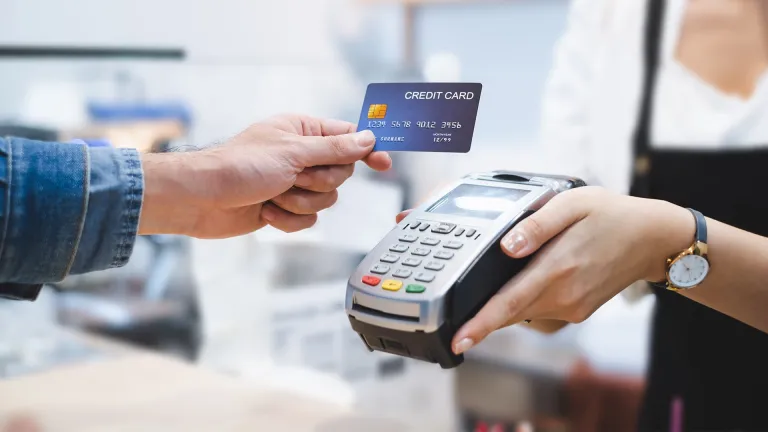Credit card transactions happen millions of times every day and processing occurs so instantaneously that most people have little understanding of what happens when they swipe their card or the card of their customers. If you’re a small business owner, having a basic understanding of the credit card processing process can help you deal with unknown issues that may arise with your customers’ payments. Understanding this process can help you know the right person/entity to contact if a problem arises to ensure that you receive the payment.
Here are the six steps for how credit card processing works:
Step 1: The Customer Swipes, Inserts, or Taps Their Credit Card
The first step in credit card processing happens when the customer comes into a store, chooses an item, and charges it to their credit card, no matter how the credit card transition occurs — whether by swiping, inserting, tapping, or manually inputting the number (online or in-person).
Step 2: The Merchant Collects the Payment Information
Once a credit card is swiped or otherwise handed over, the merchant collects the card transaction data and payment information to begin processing the transaction. At this point, the card information is transferred to the merchant, including the purchase price, discounts, cardholder name, credit card number, and expiration date.
Step 3: The Processor Routes the Payment Information
Once the credit card information is transferred to the merchant, it is routed to the next appropriate entity via a payment processor. The payment processor is a third-party company appointed by the merchant to route the payment to any of the credit card networks such as Visa or Mastercard. Once the information is received, it is routed to the cardholder’s bank (i.e., the issuing bank).
Step 4: The Issuing Bank Approves/Denies the Charge
Once the card information has been submitted to the issuing bank, the bank verifies whether or not the cardholder has sufficient funds or credit to complete the transaction. Some banks will also run other tests such as security measures to prevent credit card fraud and ensure that the transaction is legitimate.
Step 5: The Bank Relays the Results Back to the Merchant
Once the transaction is approved or denied, the results are relayed back to the merchant. If the purchase was approved, the merchant hands over the product or service to the customer and the customer’s part of the transaction is complete.
Step 6: Funds are Transferred to the Acquiring Bank
Finally, now that the transaction is completed, the funds are transferred from the issuing bank (the cardholder’s bank) to the acquiring bank (the merchant’s bank). These acquiring banks are registered members of the card networks like Visa or Mastercard and allow the business to accept credit and debit cards. These banks provide the equipment and software to accept the cards and also handle customer service needs.
Each of these five steps happens within seconds of the customer submitting their card information to the merchant, but can be vital to understanding where you or your customer’s information is going and how it is being used to complete the transaction.
If you’re a small business looking to start processing credit and debit card transactions with merchant services, reach out to Global 1 Wholesale Merchant Services at (702) 248-8900 or send us an email.






